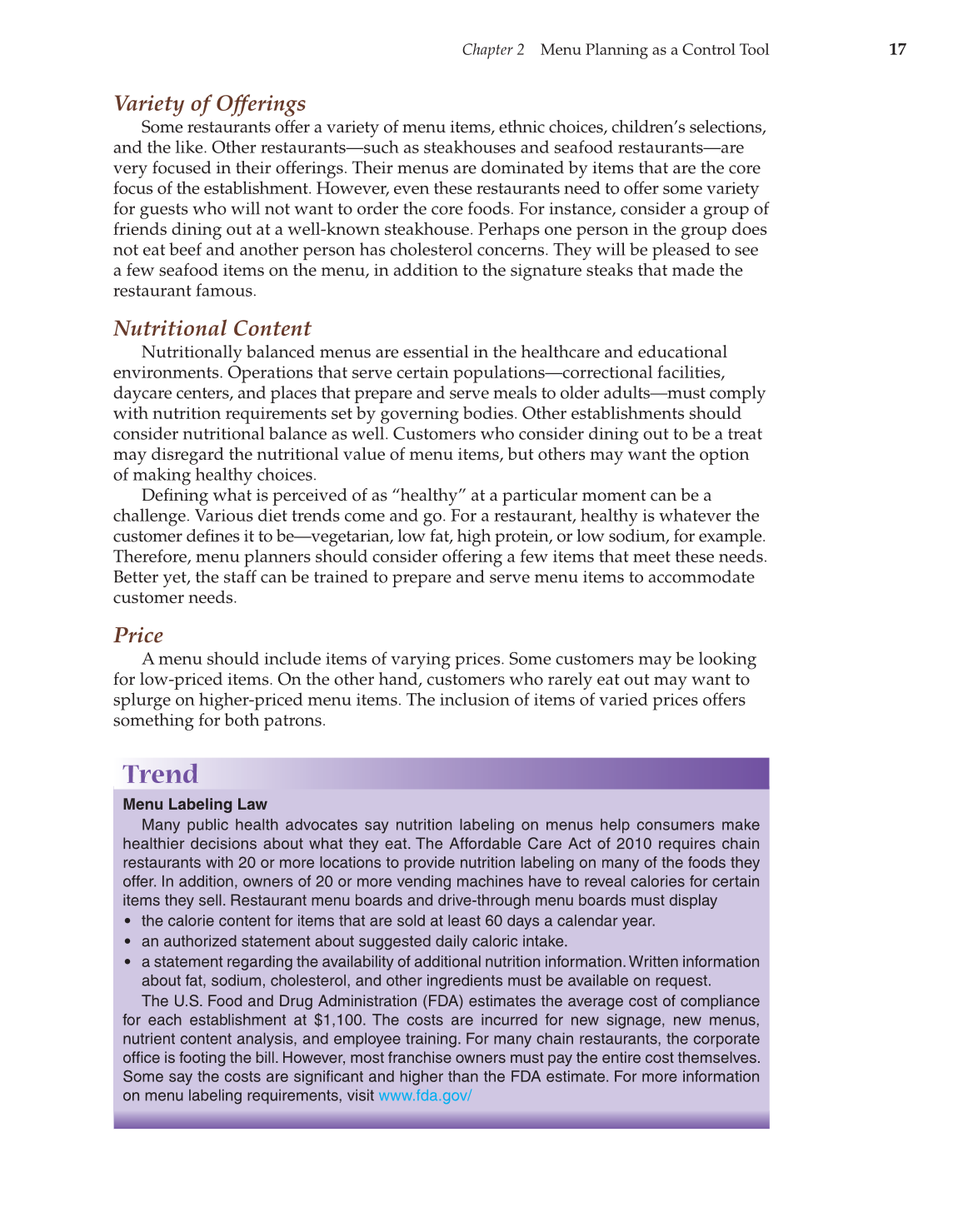Chapter 2 Menu Planning as a Control Tool
17
Variety of Offerings
Some restaurants offer a variety of menu items, ethnic choices, children’s selections,
and the like. Other restaurants—such as steakhouses and seafood restaurants—are
very focused in their offerings. Their menus are dominated by items that are the core
focus of the establishment. However, even these restaurants need to offer some variety
for guests who will not want to order the core foods. For instance, consider a group of
friends dining out at a well-known steakhouse. Perhaps one person in the group does
not eat beef and another person has cholesterol concerns. They will be pleased to see
a few seafood items on the menu, in addition to the signature steaks that made the
restaurant famous.
Nutritional Content
Nutritionally balanced menus are essential in the healthcare and educational
environments. Operations that serve certain populations—correctional facilities,
daycare centers, and places that prepare and serve meals to older adults—must comply
with nutrition requirements set by governing bodies. Other establishments should
consider nutritional balance as well. Customers who consider dining out to be a treat
may disregard the nutritional value of menu items, but others may want the option
of making healthy choices.
Defi ning what is perceived of as “healthy” at a particular moment can be a
challenge. Various diet trends come and go. For a restaurant, healthy is whatever the
customer defi nes it to be—vegetarian, low fat, high protein, or low sodium, for example.
Therefore, menu planners should consider offering a few items that meet these needs.
Better yet, the staff can be trained to prepare and serve menu items to accommodate
customer needs.
Price
A menu should include items of varying prices. Some customers may be looking
for low-priced items. On the other hand, customers who rarely eat out may want to
splurge on higher-priced menu items. The inclusion of items of varied prices offers
something for both patrons.
Trend
Menu Labeling Law
Many public health advocates say nutrition labeling on menus help consumers make
healthier decisions about what they eat. The Affordable Care Act of 2010 requires chain
restaurants with 20 or more locations to provide nutrition labeling on many of the foods they
offer. In addition, owners of 20 or more vending machines have to reveal calories for certain
items they sell. Restaurant menu boards and drive-through menu boards must display
• the calorie content for items that are sold at least 60 days a calendar year.
• an authorized statement about suggested daily caloric intake.
• a statement regarding the availability of additional nutrition information. Written information
about fat, sodium, cholesterol, and other ingredients must be available on request.
The U.S. Food and Drug Administration (FDA) estimates the average cost of compliance
for each establishment at $1,100. The costs are incurred for new signage, new menus,
nutrient content analysis, and employee training. For many chain restaurants, the corporate
offi ce is footing the bill. However, most franchise owners must pay the entire cost themselves.
Some say the costs are signifi cant and higher than the FDA estimate. For more information
on menu labeling requirements, visit www.fda.gov/
